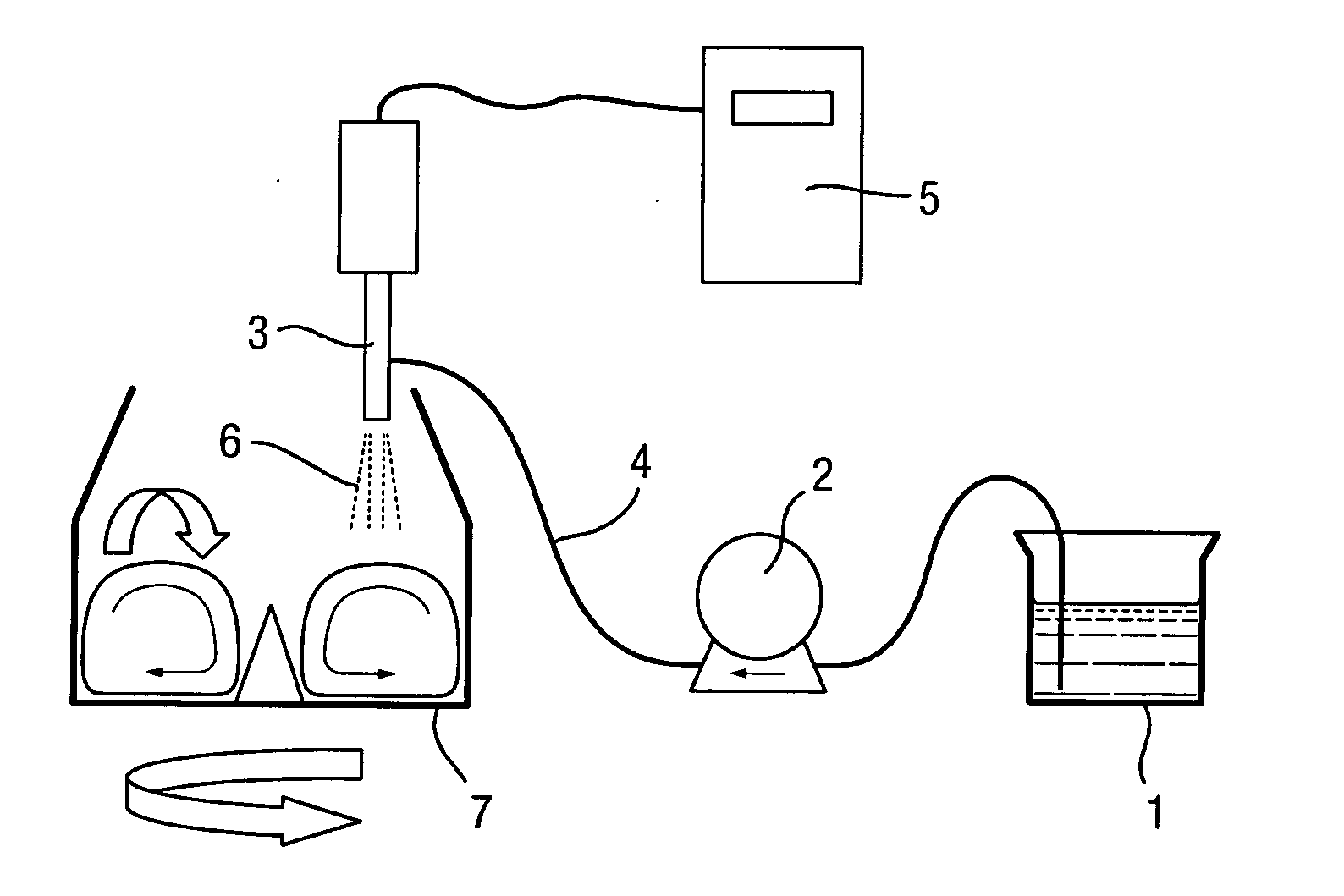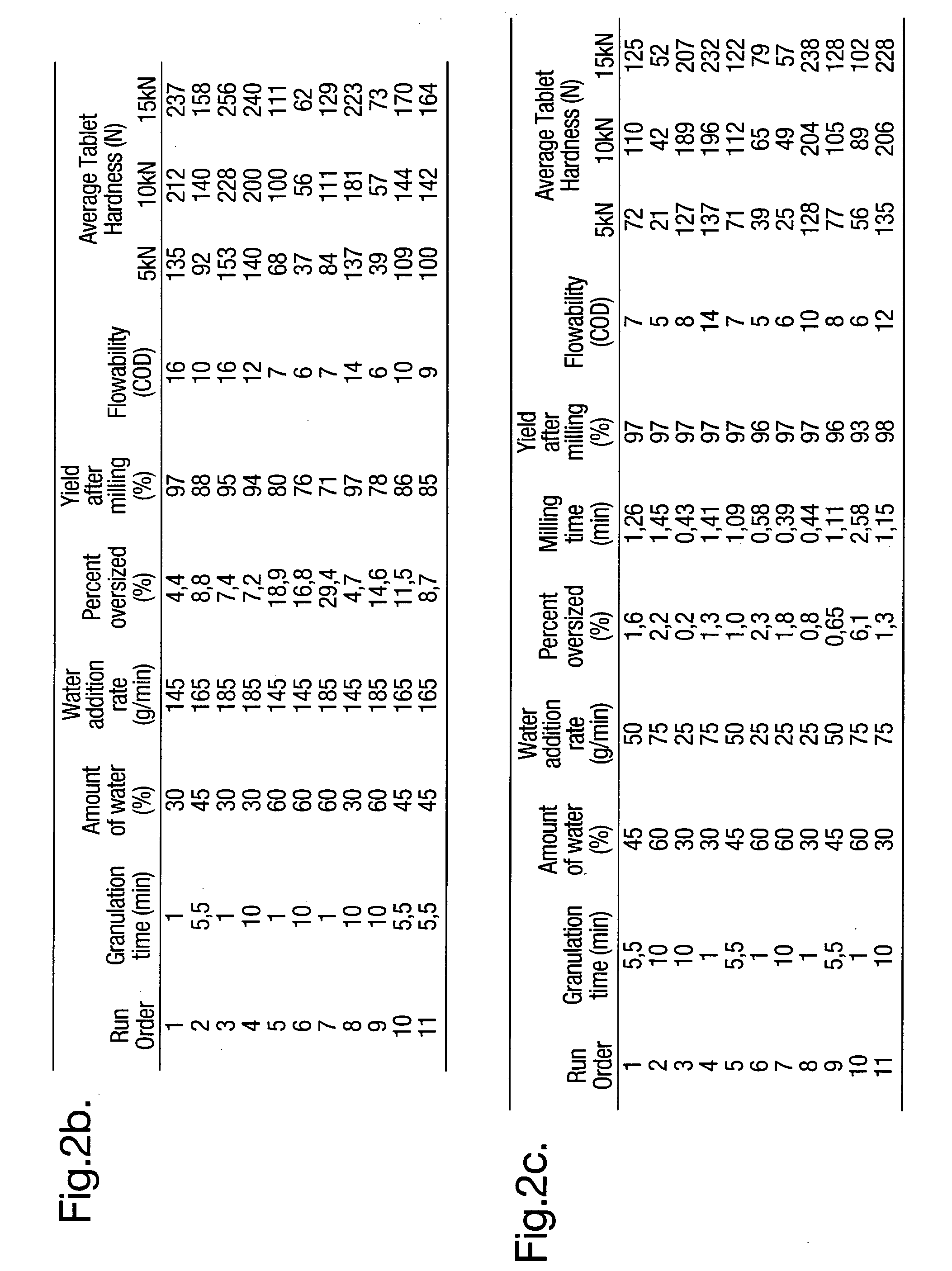Wet Granulation System Comprising at Least One Ultrasonic Nozzle
a technology of ultrasonic nozzle and wet granulation system, which is applied in the direction of vibration, colloidal chemistry, transportation and packaging, etc., can solve the problems of superior growth, over-sized granule production, and poor initial liquid binder distribution, so as to improve the flow rate and the distribution of small particles is small and the effect of good flow ability
- Summary
- Abstract
- Description
- Claims
- Application Information
AI Technical Summary
Benefits of technology
Problems solved by technology
Method used
Image
Examples
Embodiment Construction
[0037]FIG. 1 shows an embodiment of the present invention. An ultrasonic atomizer nozzle 3 is used in a mixer 7 with rotating means, i.e. a bottom drive impeller. Fine particulate solids of at least one pharmaceutical product, i.e. in the form of pharmaceutical solids material, are added in a mixer 7, and an appropriate amount of liquid binder 1, i.e. an aqueous or an organic solution, is applied from above by an ultrasonic atomizer equipped with an atomizer nozzle 3.
[0038]During operation, the system works as follows. A fixed amount of granulation liquid binder 1 is supplied by means of a metering pump 2 (for example a gear pump) to a nozzle 3 via a tube 4. Appropriate ultrasonic vibrations are imparted to the nozzle 3 by a control unit 5 to discharge droplets 6 into a mixer 7. By using a gear pump together with an ultrasonic-unit, the flow of liquid binder 1 is controlled very accurately and thus, as a consequence, indirectly controlling the granule growth.
[0039]In FIGS. 2, 3 and ...
PUM
| Property | Measurement | Unit |
|---|---|---|
| diameter | aaaaa | aaaaa |
| diameter | aaaaa | aaaaa |
| temperature | aaaaa | aaaaa |
Abstract
Description
Claims
Application Information
 Login to View More
Login to View More - R&D
- Intellectual Property
- Life Sciences
- Materials
- Tech Scout
- Unparalleled Data Quality
- Higher Quality Content
- 60% Fewer Hallucinations
Browse by: Latest US Patents, China's latest patents, Technical Efficacy Thesaurus, Application Domain, Technology Topic, Popular Technical Reports.
© 2025 PatSnap. All rights reserved.Legal|Privacy policy|Modern Slavery Act Transparency Statement|Sitemap|About US| Contact US: help@patsnap.com



